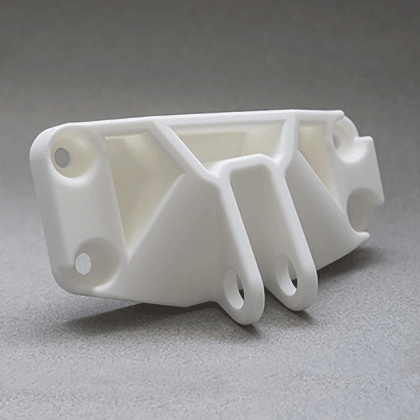This blog contains the following keywords sls 3d printing services.
3D printing technology has revolutionized various industries, offering new possibilities and opportunities. One of the most promising techniques is Selective Laser Sintering (SLS) 3D printing. In this article, we will explore the advantages and limitations of SLS 3D printing technology and its impact on different sectors.
Advantages of SLS 3D Printing Technology
SLS 3D printing technology offers several advantages that make it a preferred choice for many applications. One of the key advantages is its ability to create complex geometries with high precision. Unlike traditional manufacturing methods, SLS 3D printing can produce intricate designs and structures that were previously impossible to achieve.
Another advantage of SLS 3D printing is its versatility in material selection. Unlike other 3D printing techniques, SLS can work with a wide range of materials, including plastics, metals, ceramics, and composites. This flexibility allows for the production of functional prototypes, end-use parts, and even customized products.
SLS 3D printing also offers a high level of scalability. Whether you need a single prototype or a large batch of parts, SLS can efficiently handle the production process. This scalability makes it suitable for both small-scale projects and large-scale manufacturing.
Furthermore, SLS 3D printing technology enables the production of lightweight and durable parts. By using advanced materials and optimizing the design, SLS can create components that are strong, yet lightweight. This is particularly advantageous in industries such as aerospace and automotive, where weight reduction is crucial for fuel efficiency and performance.
Limitations of SLS 3D Printing Technology
While SLS 3D printing technology offers numerous advantages, it also has some limitations that need to be considered. One of the main limitations is the cost. SLS printers and materials can be expensive, making it less accessible for small businesses or individuals. However, as the technology advances and becomes more widespread, the cost is expected to decrease.
Another limitation of SLS 3D printing is the post-processing requirements. After the printing process, the parts need to be carefully cleaned and finished to achieve the desired surface quality. This additional step can be time-consuming and may require specialized equipment or expertise.
Additionally, SLS 3D printing has certain limitations in terms of part size and resolution. The size of the build chamber restricts the maximum dimensions of the parts that can be produced. Moreover, the resolution of SLS prints may not be as high as other 3D printing techniques, which can affect the level of detail and surface finish.
Applications of SLS 3D Printing Technology
SLS 3D printing technology has found applications in various industries, including aerospace, automotive, healthcare, and consumer goods. In the aerospace industry, SLS is used to produce lightweight components, such as turbine blades and brackets, which contribute to fuel efficiency and overall performance.
In the automotive sector, SLS 3D printing is utilized for rapid prototyping, tooling, and manufacturing of end-use parts. It enables the production of complex geometries and customized components, improving the overall design and functionality of vehicles.
Furthermore, SLS 3D printing has made significant advancements in the healthcare industry. It is used for the production of patient-specific implants, prosthetics, and surgical guides. The ability to create personalized medical devices has revolutionized patient care and treatment outcomes.
Conclusion
SLS 3D printing technology offers a wide range of advantages, including the ability to create complex geometries, versatility in material selection, scalability, and lightweight yet durable parts. However, it also has limitations in terms of cost, post-processing requirements, and part size and resolution.
Despite these limitations, SLS 3D printing has found applications in various industries, such as aerospace, automotive, healthcare, and consumer goods. Its impact on these sectors has been transformative, enabling the production of innovative designs and customized solutions.
If you want to learn more about SLS 3D printing technology and its applications, check out the following credible sources:

